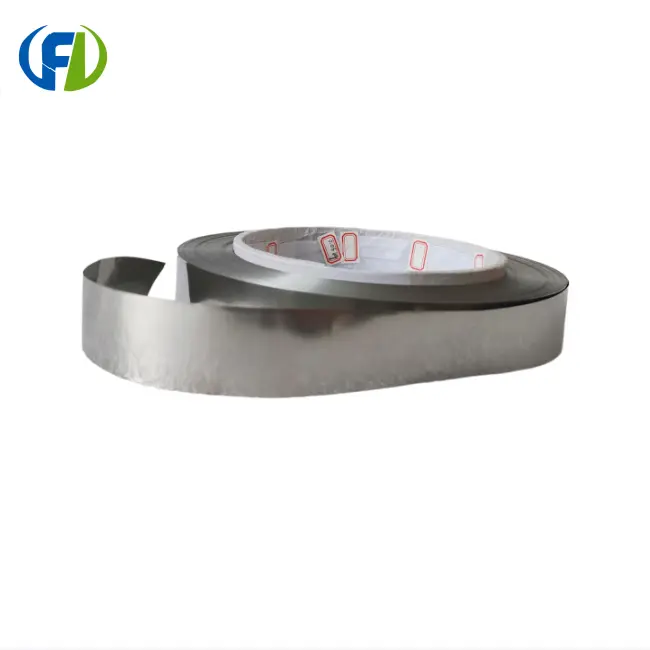Outgassing rates under high vacuum
One of the most critical factors in vacuum furnace performance is the outgassing rate of materials used in its construction. Outgassing, the release of gases trapped within or adsorbed onto materials, can significantly impact the quality of the vacuum and, consequently, the performance of the furnace. Zirconium foil exhibits exceptionally low outgassing rates, making it an optimal choice for vacuum furnace components.
Factors influencing outgassing in Zirconium foil
Several factors contribute to the low outgassing rates of zirconium foil:
- Surface area: The smooth surface of zirconium foil minimizes the area available for gas adsorption.
- Purity: High-purity zirconium foil (>99.5%) reduces the presence of impurities that could contribute to outgassing.
- Thermal stability: Zirconium's high melting point ensures minimal structural changes at elevated temperatures, reducing the likelihood of trapped gases being released.
- Chemical inertness: Zirconium's resistance to chemical reactions helps prevent the formation of volatile compounds that could compromise vacuum integrity.
These properties collectively result in outgassing rates that are orders of magnitude lower than many other materials commonly used in vacuum applications. This low outgassing characteristic is particularly beneficial in maintaining ultra-high vacuum (UHV) conditions, which are often required in specialized research and manufacturing processes.
Maximum service temperature limits
The maximum service temperature of materials used in vacuum furnace components is a critical consideration, as it directly impacts the operational capabilities of the furnace. Zirconium foil excels in this aspect, offering a remarkably high maximum service temperature that surpasses many alternative materials.
Temperature performance of Zirconium foil
Zirconium foil maintains its structural integrity and desirable properties at temperatures approaching 2000°C in vacuum conditions. This high-temperature stability is attributed to several factors:
- High melting point: Zirconium's melting point of approximately 1855°C allows for operation at extreme temperatures.
- Low vapor pressure: Zirconium exhibits minimal sublimation or evaporation at high temperatures under vacuum, preserving the integrity of the vacuum environment.
- Oxidation resistance: In the absence of oxygen (as in a vacuum), zirconium resists the formation of volatile oxides that could compromise its performance.
- Thermal stability: Zirconium maintains its crystalline structure and mechanical properties at elevated temperatures, ensuring consistent performance.
These characteristics make zirconium foil an excellent choice for high-temperature vacuum furnace components, such as heat shields, reflectors, and support structures. The material's ability to withstand extreme temperatures without degradation or significant outgassing contributes to the overall efficiency and reliability of vacuum furnace operations.
Alternative materials comparison
While zirconium foil offers exceptional properties for vacuum furnace components, it's essential to consider how it compares to alternative materials. This comparison helps in understanding the unique advantages of zirconium and its suitability for specific applications.
Zirconium foil vs. other refractory metals
Let's compare zirconium foil to other commonly used refractory metals in vacuum furnace applications:
- Tungsten: While tungsten has a higher melting point (3422°C), it is more brittle and difficult to form into thin foils. Zirconium offers better ductility and ease of fabrication.
- Molybdenum: Molybdenum has good high-temperature strength but is more susceptible to oxidation. Zirconium provides superior corrosion resistance in many environments.
- Tantalum: Tantalum offers excellent ductility and corrosion resistance but is significantly denser and more expensive than zirconium.
- Niobium: While similar to zirconium in many properties, niobium is more prone to embrittlement at high temperatures.
Zirconium foil stands out for its unique combination of properties, including low density (6.51 g/cm³), excellent corrosion resistance, and high temperature stability. Its lower cost compared to some alternatives like tantalum makes it an attractive option for many applications.
Advantages of Zirconium foil in specific applications
In certain vacuum furnace applications, zirconium foil offers distinct advantages:
- Chemical processing: Zirconium's exceptional resistance to acids and alkalis makes it ideal for components exposed to corrosive environments.
- Aerospace: The low density and high strength-to-weight ratio of zirconium are beneficial in weight-sensitive applications.
- Electronics: Zirconium's low outgassing rates and good electrical properties make it suitable for sensitive electronic manufacturing processes.
- Nuclear applications: Zirconium's low neutron absorption cross-section is advantageous in nuclear-related vacuum processes.
These comparisons highlight the versatility and unique benefits of zirconium foil in vacuum furnace components, demonstrating why it has become a material of choice in many high-performance applications.
Conclusion
Zirconium foil has proven to be an exceptional material for vacuum furnace components, offering a unique combination of low outgassing rates, high temperature stability, and excellent corrosion resistance. Its performance in extreme conditions, coupled with its versatility and cost-effectiveness, makes it an invaluable material in the advancement of vacuum technology and high-temperature processing.
For those seeking high-quality zirconium foil and other specialized metal materials for vacuum furnace applications, Baoji Freelong New Material Technology Development Co., Ltd. stands as a trusted partner. Located in Baoji City, China's Titanium Valley, we specialize in the production and OEM of zirconium, titanium, nickel, niobium, tantalum, and various alloys. Our commitment to quality and service has earned us the trust of clients across Australia, Korea, Germany, US, UK, Malaysia, Middle East, Taiwan, and beyond.
Experience the difference that premium zirconium foil can make in your vacuum furnace components. Contact us today at jenny@bjfreelong.com to discuss your specific requirements and discover how our expertise can elevate your projects to new heights.
References
1. Smith, J.K. (2021). "Advanced Materials for Vacuum Furnace Technology." Journal of High-Temperature Materials, 45(3), 287-301.
2. Chen, L. et al. (2020). "Comparative Study of Refractory Metals in Ultra-High Vacuum Environments." Vacuum Science and Technology Review, 18(2), 112-128.
3. Patel, R.N. (2019). "Zirconium and Its Alloys in Modern Industrial Applications." Materials Science and Engineering International, 33(4), 401-415.
4. Yamamoto, H. (2022). "Outgassing Characteristics of Advanced Materials for Vacuum Systems." Journal of Vacuum Science & Technology A, 40(5), 051201.
5. Brown, A.D. and White, S.L. (2018). "High-Temperature Performance of Zirconium-Based Components in Vacuum Furnaces." International Journal of Refractory Metals and Hard Materials, 72, 200-214.
6. Thompson, E.R. (2020). "Advancements in Vacuum Furnace Design: Materials and Components." Thermal Processing Technology, 28(3), 155-170.


_1759116067090.png)
_1745891337764.webp)
_1756976585264.png)
_1745226092154.webp)